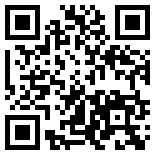托福閱讀正誤判斷題解析方法
導(dǎo)讀:正誤判斷題(True or False)是考查讀者根據(jù)文章中闡明的信息,判斷什么信息是正確的,,什么信息是錯(cuò)誤的或文章中沒有提到的,。考生的任務(wù)是在文章中找到相關(guān)信息,,從而證實(shí)四個(gè)選項(xiàng)中有三個(gè)是正確的,,并且/或者有一個(gè)選項(xiàng)是錯(cuò)誤的。
例題: Although we now ten
[圖片0] 正誤判斷題(True or False)是考查讀者根據(jù)文章中闡明的信息,,判斷什么信息是正確的,,什么信息是錯(cuò)誤的或文章中沒有提到的。考生的任務(wù)是在文章中找到相關(guān)信息,,從而證實(shí)四個(gè)選項(xiàng)中有三個(gè)是正確的,,并且/或者有一個(gè)選項(xiàng)是錯(cuò)誤的。 例題:
…Although we now tend to refer to the various crafts according to the materials used to construct them-clay, glass, wood, fiber, and metal-it was once common to think of crafts in terms of function, which led to their being known as the “applied arts.” Approaching crafts from the point of view of function, we can divide them into simple categories: containers, shelters, and supports. There is no way around the fact that containers, shelters, and supports must be functional. The applied arts are thus bound by the laws of physics, which pertain to both the materials used in their making and the substances and things to be contained, supported, and sheltered. These laws are universal in their application, regardless of cultural beliefs, geography, or climate. If a pot has no bottom or has large openings in its sides, it could hardly be considered a container in any traditional sense… The passage discusses applied-art objects in relation to all of the following EXCEPT A. the techniques used in their construction B. the ways they have been classified C. their function D. the universality of the laws that govern them 托福閱讀題目分類解析 一,、單詞題目
平時(shí)注意單詞量的積累,,力求達(dá)到可以隨時(shí)隨地記憶單詞的境界。其實(shí)我們?cè)谟洃泦卧~的時(shí)候也可以適當(dāng)?shù)厥褂靡恍┎呗?,那就是在我們可以把自己的?cè)重點(diǎn)放在動(dòng)詞和形容詞的記憶上,。 考試過后,你就會(huì)發(fā)現(xiàn)這個(gè)策略的事半功倍了,。此外,,對(duì)于自己不認(rèn)識(shí)的單詞,我們應(yīng)該主動(dòng)回原文找同義詞,,或找相關(guān)的提示信息,。 二、找代詞指代對(duì)象的題目 在新聞中,,也存在著兩大主要題型,,即:文章細(xì)節(jié)考查題和文章結(jié)構(gòu)考查題。 1,、文章細(xì)節(jié)考查題
解答文章細(xì)節(jié)考查題,,我們一般都可以回到原文中去做定位,找到相近或相似的內(nèi)容,,進(jìn)而得出答案,。 常見的定位有以下3種: (1)題目本身給出定位。 (2)至少先可作出一個(gè)段落的定位,。 (3)位置多夾于前后兩題位置之間,。 2、文章結(jié)構(gòu)考查題
一定要注意: (1)千萬不要根據(jù)你讀的信息去作推理,。 (2)不要把文章從頭到尾當(dāng)成一個(gè)整體,盡可能各段獨(dú)立,。 (3)根據(jù)經(jīng)驗(yàn),,在考試中,整篇文章的后一句出題較多,,所以應(yīng)該仔細(xì)閱讀這個(gè)重要的句子,。 以上是針對(duì)托福考試閱讀部分的常見題型做出的一些有關(guān)于考試解題方法與技巧的分項(xiàng)介紹,。 更多精彩內(nèi)容,,請(qǐng)關(guān)注:珠海雅思托福培訓(xùn)學(xué)校
[圖片0] 正誤判斷題(True or False)是考查讀者根據(jù)文章中闡明的信息,,判斷什么信息是正確的,,什么信息是錯(cuò)誤的或文章中沒有提到的。考生的任務(wù)是在文章中找到相關(guān)信息,,從而證實(shí)四個(gè)選項(xiàng)中有三個(gè)是正確的,,并且/或者有一個(gè)選項(xiàng)是錯(cuò)誤的。 例題:
…Although we now tend to refer to the various crafts according to the materials used to construct them-clay, glass, wood, fiber, and metal-it was once common to think of crafts in terms of function, which led to their being known as the “applied arts.” Approaching crafts from the point of view of function, we can divide them into simple categories: containers, shelters, and supports. There is no way around the fact that containers, shelters, and supports must be functional. The applied arts are thus bound by the laws of physics, which pertain to both the materials used in their making and the substances and things to be contained, supported, and sheltered. These laws are universal in their application, regardless of cultural beliefs, geography, or climate. If a pot has no bottom or has large openings in its sides, it could hardly be considered a container in any traditional sense… The passage discusses applied-art objects in relation to all of the following EXCEPT A. the techniques used in their construction B. the ways they have been classified C. their function D. the universality of the laws that govern them 托福閱讀題目分類解析 一,、單詞題目
平時(shí)注意單詞量的積累,,力求達(dá)到可以隨時(shí)隨地記憶單詞的境界。其實(shí)我們?cè)谟洃泦卧~的時(shí)候也可以適當(dāng)?shù)厥褂靡恍┎呗?,那就是在我們可以把自己的?cè)重點(diǎn)放在動(dòng)詞和形容詞的記憶上,。 考試過后,你就會(huì)發(fā)現(xiàn)這個(gè)策略的事半功倍了,。此外,,對(duì)于自己不認(rèn)識(shí)的單詞,我們應(yīng)該主動(dòng)回原文找同義詞,,或找相關(guān)的提示信息,。 二、找代詞指代對(duì)象的題目 在新聞中,,也存在著兩大主要題型,,即:文章細(xì)節(jié)考查題和文章結(jié)構(gòu)考查題。 1,、文章細(xì)節(jié)考查題
解答文章細(xì)節(jié)考查題,,我們一般都可以回到原文中去做定位,找到相近或相似的內(nèi)容,,進(jìn)而得出答案,。 常見的定位有以下3種: (1)題目本身給出定位。 (2)至少先可作出一個(gè)段落的定位,。 (3)位置多夾于前后兩題位置之間,。 2、文章結(jié)構(gòu)考查題
一定要注意: (1)千萬不要根據(jù)你讀的信息去作推理,。 (2)不要把文章從頭到尾當(dāng)成一個(gè)整體,盡可能各段獨(dú)立,。 (3)根據(jù)經(jīng)驗(yàn),,在考試中,整篇文章的后一句出題較多,,所以應(yīng)該仔細(xì)閱讀這個(gè)重要的句子,。 以上是針對(duì)托福考試閱讀部分的常見題型做出的一些有關(guān)于考試解題方法與技巧的分項(xiàng)介紹,。 更多精彩內(nèi)容,,請(qǐng)關(guān)注:珠海雅思托福培訓(xùn)學(xué)校



